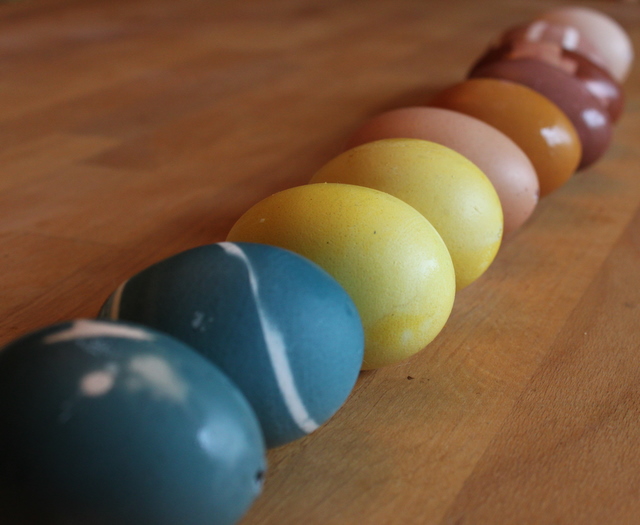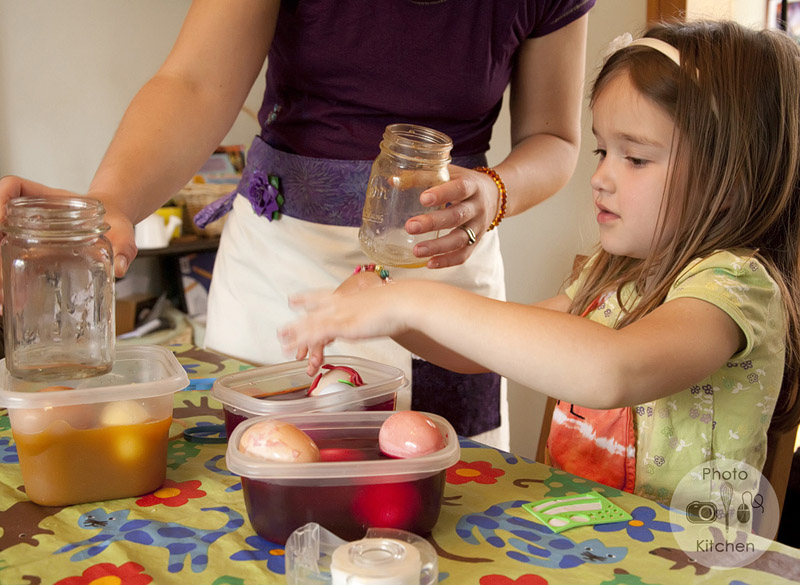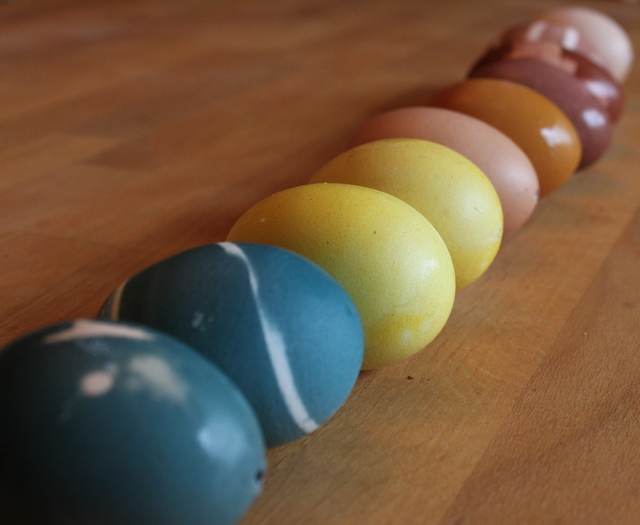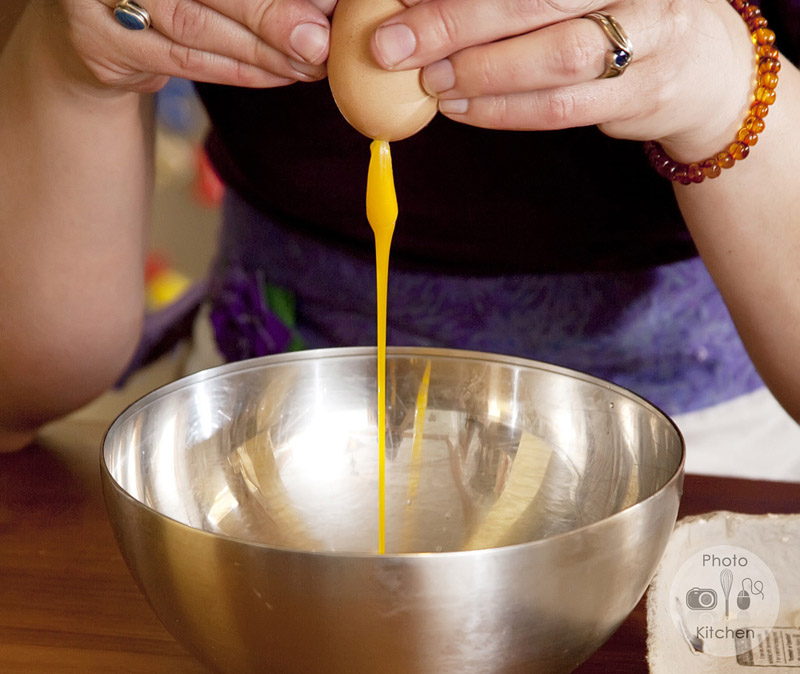After the eggs are dyed and the baskets filled, many families are left with dozens of boiled eggs.
 Hard-boiled eggs are full of protein, vitamins, and minerals. Mixing boiled eggs into egg salad, slicing into potato salad, or eating whole for breakfast is fine but with an abundance, maybe you want to try something new. Here are five unusual ideas:
Hard-boiled eggs are full of protein, vitamins, and minerals. Mixing boiled eggs into egg salad, slicing into potato salad, or eating whole for breakfast is fine but with an abundance, maybe you want to try something new. Here are five unusual ideas:
1. Pickled Eggs - Local food truck The Coop has a serious following for their pickled eggs. Theirs have a light vinegar and herbal flavor. For a more colorful pickled egg, try pickling them in beet juice. Simply Recipes shares four pickled egg recipes.
2. Scotch Eggs - Leave it to the Scottish to devise a way to enrich an already robust food by wrapping a peeled hard-boiled egg in sausage and bread crumbs and then deep frying it. I've never eaten one but with Charcutepalooza bulk sausage in the freezer and an appreciation for saturated fats, I think we must make scotch eggs next week.
3. Cook Ethnic - Doro Wat, a common Ethiopian chicken stew, contains boiled eggs cooked in the spicy sauce. Boiled eggs sometimes make an appearance in Indian curries too. Make Chinese marbled tea eggs by crackling the shell of your boiled eggs and soaking them in soy sauce and spices. The Steamy Kitchen recipe for marbled tea eggs looks intriguing.
4. Asparagus Chimichurri - I know we will make my asparagus chimichurri with boiled egg again this week. It was so tasty! Toss finely chopped boiled eggs on any warm green vegetable for added richness and flavor.
5. Slingshot Ammunition - If you know Alex, it might surprise you to learn that he was in a fraternity for one year during college. It will likely not surprise you that one of his fondest frat memories is of hurling things off the top floor of the house with an oversize slingshot. When I asked him for a unique idea for using boiled eggs, he instantly said "slingshot". I can imagine that a hard-boiled egg is a great ammunition, though I hope we won't be using ours in this way!
What are your favorite ways to use hard-boiled eggs?








